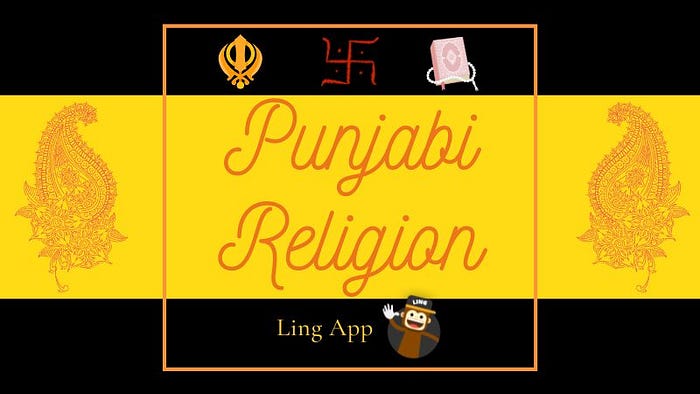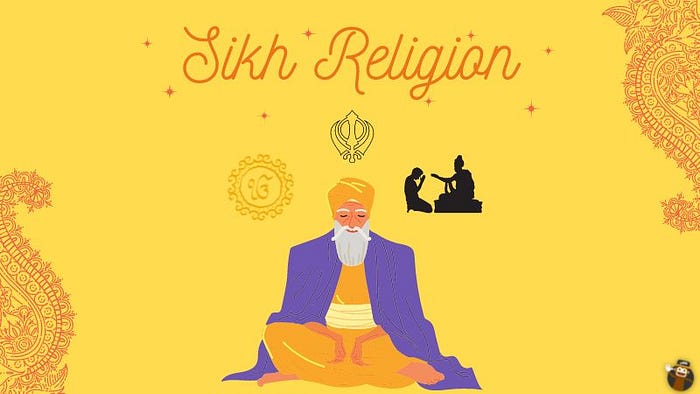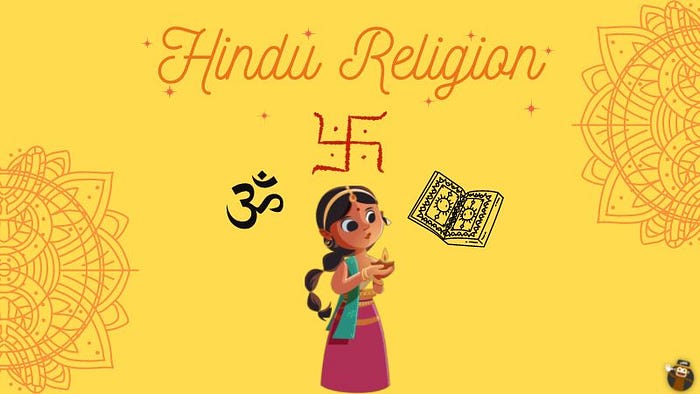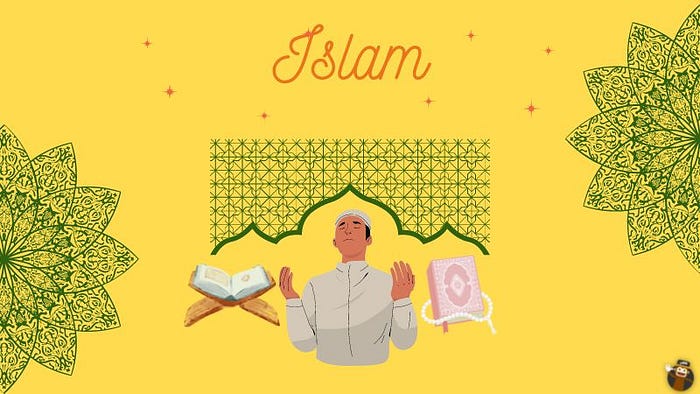Punjabi Religion: Interesting Facts About 3 Major Faiths
Original blog post: https://ling-app.com/pa/punjabi-religion/

Several religions coexist in Punjab, making it one of the best places to be where you won’t feel judged because of your faith. Punjab, the sixteenth most populated state in India, has diversified people representing numerous ethnic groups and faiths. As a Punjabi learner, you would be delighted to know more about the main Punjabi religion, i.e., the Sikh religion predominant in Punjab, and a few more religious groups in the country. If you are already for that, then let’s get started!
The central beliefs in the state are Sikhism and Hinduism. While their numbers are very small, other religions like Islam, Christianity, Jainism, and Buddhism also thrive. From a total population of 2.77 crores, around 1.6 crores (57.69%) identify as followers of Sikhism, representing the Sikh community, 1.06 crore (38.49%) as Hindus or adherents of the Hindu religion, with Muslims coming in at 1.93%, and Christians at 1.26%. Let’s look at more details on the three main religions practiced in Punjab: Sikhism, Hinduism, and Islam.
Sikh Punjabi Religion

The Sikh faith, different from Hinduism and Islam, was established in Northern India in the middle ages by Guru Nanak Dev Ji, who does not owe allegiance to any other religion. The name Sikh (pronounced “sickh”) implies “follower” or “novice.”
The monotheistic religion of Sikhism emphasizes the equality of all men and women. Sikhs adhere to three fundamental principles: praying while thinking of God’s name, generating a livelihood by legitimate means, and sharing the rewards of one’s efforts with others. Sikhism rejects caste and class distinctions and strongly emphasizes serving others. The humanitarian values of freedom, equality, and justice are taught to the Sikhs by faith. It also acknowledges the underlying principles of all human achievements, including faiths and belief systems.
People from various religions and cultural backgrounds can benefit from the universality of the Sikh way of life, which inspires us to look past our differences and cooperate for global peace and tranquility.
The Value Of Turbans
Sikh men wear turbans religiously as it represents the Sikh identity, and they have long hair with turbans out of respect for God. Consider it a part of their Punjabi clothing. Every Sikh Guru who came after Guru Nanak wore a turban, making him the first and founder of Sikhism.
Guru Gobind Singh, the tenth guru of the Sikh faith, performed an immersion rite in the city of Anandpur in 1699. He established the Khalsa, a ceremony for baptized Sikhs at this location. He gathered all Sikh believers and said that the Kesh (hair) is one of the foundations of the faith and should be maintained and kept in a figurative turban. The wearing of a turban has usually become less common among other Punjabi populations due to the impact of western society, but it still holds religious importance for Sikhs.
Guru Granth Sahib
In the year 1604, in the town of Amritsar, the Fifth Sikh Guru, Arjan Dev, began compiling the Guru Granth Sahib. The earliest version, known as Adi Granth, was put together by Guru Arjan, the fifth Sikh Guru. It is the sacred text of Sikhism, and Sikhs see it as the ultimate, supreme, and ever-living Guru in the tradition of the ten-person Gurus of the Sikh faith.
Guru Gobind Singh worked on its final, second edition, completed at Damdama Sahib in 1705. To the collection created a century earlier, he added his father’s poems, Guru Tegh Bahadur, the Ninth Master, and a syncopated rhythm of his own.
Guru Nanak
One of the newest faiths, Sikhism, was founded by Guru Nanak. There are ten Sikh gurus, and he was the first one.
As the first Sikh Guru, Guru Nanak’s theological doctrines lay the essential elements upon which Sikhism was built. Guru Nanak had what he claimed to be firsthand contact with God when he was around 30 years old.
Guru Nanak (1469–1539 CE) was born in Talwandi, a hamlet roughly 40 miles from Lahore. He is supposed to have come from a family of merchants. In his early 20s, Nanak relocated to Sultanpur, a significant city on the primary route connecting Lahore and Delhi, where he took a secretarial position with the Lodi government.
Guru Nanak, regarded as a religious reformer, traveled throughout South Asia and the Middle East to promote his ideas. Approximately three decades ago, he had an interaction with God that he called a breakthrough; it profoundly impacted the remainder of his life.
Nanak started singing hymns called shabads and preached about the unity of God. After some time, Nanak founded a community where he proceeded to propagate and develop the Sikh culture.
Hinduism

With almost 750 million adherents, Hinduism is currently the world’s third-largest widespread religion. India’s leading religion, Hinduism, has its roots in northern India, close to the Indus River, and dates back roughly 4000 years ago. In India, more than 80% of people identify as Hindu.
The name “Hindu” was initially used for those who lived outside the boundaries of the dharma by outsiders (especially by the Greeks and the Persians). There is no apostle, no founding member, and no one instructor in Hinduism. Moreover, there is more than one type of Hinduism.
Check out the best Punjabi ceremonies and events using a Punjabi calendar.
Hindus of the contemporary era build intricate social structures and embrace a variety of goddesses. The Brahman, or Divine, is constant in the cosmos in many manifestations, that consciousness takes many lives to achieve and that one’s deeds will affect the soul’s path in the following life are just a few Hindu beliefs shared by all Hindus.
Foundational Principles
Hinduism is a term used to describe the beliefs and practices of several religious organizations that originated in India. The central tenet of Hinduism, or Vedanta, is that a person’s essential character is not limited to their psychological or physical makeup. The energy, or the flame of God inside the spirit, lies above each of these.
Moksha
A Hindu’s ultimate spiritual aspiration is to merge with Brahma, and “moksha” refers to this liberation. Hindus feel that until moksha is attained, they will constantly be reborn to strive for the consciousness of reality.
Dharma
It is the guideline for living. Gratitude for seniors is valued, and many people see the wedding as a child’s religious obligation.
Artha
It is the quest for wealth and success through legitimate methods.
Karma
You can achieve it via good deeds, education, and commitment, and you can resurrect at a greater level. Doing this might produce positive outcomes.
Islam

Islam is a religion based on accepting and adhering to the revelations of God as they were delivered to His final messenger, Muhammad.
In Punjab, there are 2% or so Muslims who are citizens of India, and they are enjoying their religious convictions. Although there are Muslims in some areas of Ludhiana and Patiala, most Muslims live in the town of Malerkotla in the Sangrur district.
Malerkotla
During the partition, the population of the Indian subcontinent on both sides of Punjab changed completely along religious lines. But there was one exception: the Muslims of Malerkotla, a town in the Sangrur area. They have remained there up until this point, and it is said that a Muslim MLA backs them.
Malerkotla is a village in the Sangrur region of Punjab. However, it will be designated as a district by the government.
Angels
Muslims consider angels to be revered beings and acknowledge their existence. According to them, the angels solely serve, obey, and carry out Allah’s orders. Gabriel is one of the angels that delivered the Prophet Muhammad the Holy Book of Islam, i.e., the Koran.
Faith/Shahadah
Islam’s core tenet is that “There is no deity but God, and Muhammad is the Messenger of God.” This Arabic phrase is frequently clearly marked in architecture and on various items.
Five Prayers
Muslims pray facing Mecca: in the morning, at midday, in the late afternoon, and in the evening. People occasionally pray on a little rug or mat explicitly designated for this function, which involves reciting the first verse of the Koran.
Alms/Zakkaat
Muslims are required by Islamic law to give a set percentage of their earnings to neighborhood residents and others in need.
Fasting/Swam
All average healthy Muslims are obligated to fast throughout the daytime hours of Ramadan, i.e., the ninth month of the Islamic calendar. These are done at different dates and times considering the gregorian calendar.
Wrapping Up

The Ling App is likely known to everyone who has ever attempted to learn a language, and Punjabi is one of the languages you can learn with the Ling app. It offers over a hundred Punjabi lessons broken down into beginner to advanced-level categories.
Additionally, after memorizing a word, you may quiz yourself on it using its amazing quiz-type feature. It is a straightforward app that is incredibly easy to use, especially for beginners. Whether a master of Punjabi or a moderate Punjabi speaker, you will always find something new you can learn through the Ling App. So download the app from Google Playstore or App Store and Start learning Punjabi now!!!
